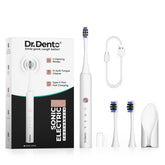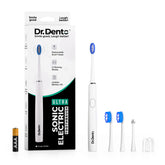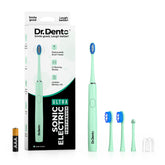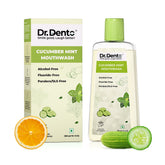In these times of easy accessibility to highly processed food with high amounts of sugar has resulted in oral ailments being much more prevalent among the modern society. Maintaining good oral hygiene is essential for overall health and well-being. One of the most important aspects of oral hygiene is brushing your teeth regularly. In order to stay relevant and up to date, integrating modern technology within one’s daily life and routine has almost become a must! With the advent of electric toothbrushes, brushing has become more convenient and effective. Among the various types of electric toothbrushes, sonic toothbrushes have gained popularity in recent years due to their innovative technology.
The Science Behind Sonic Technology for Oral Care
Sonic technology is a new-age innovation used in electric toothbrushes. It creates a dynamic cleaning action with high-frequency vibrations. The toothbrush head vibrates at 200-400 Hz, transferring mechanical energy to the bristles. This motion makes the bristles cover a larger area with rapid back-and-forth motion which in turn removes plaque and debris from teeth and gums effectively.
The Operating Principle of a Sonic Electric Toothbrush
Sonic technology is different from other electric toothbrush technologies such as oscillating-rotating, where the brush head rotates in one direction and then the other. Sonic toothbrushes make the bristles vibrate, back and forth at a much higher frequency than oscillating-rotating toothbrushes, which makes them more effective at removing plaque and tartar.
One of the major benefits of sonic technology is that it creates a wave-like motion that extends beyond the bristles of the toothbrush. This motion helps to disrupt plaque and bacteria build-up in hard-to-reach areas of the mouth, such as between teeth and along the gum line. The rapid vibrating motion also generates micro bubbles in the mouth that can penetrate the spaces between teeth and effectively remove plaque and food particles.
Another advantage of sonic technology that we would like to highlight is that, it is generally considered safe for most people to use. In sonic toothbrushes as the brush head is not rotating or spinning, there is less risk of injury to the gums or teeth. Additionally, the high-frequency vibrations of the toothbrush can provide a gentle massage to the gums, promoting better blood circulation, relief from inflammation pain and healthier gums.
The Benefits of using Sonic Electric Toothbrush
Sonic technology has been shown to be effective at improving oral health outcomes, including reducing the incidence of gingivitis and improving overall gum health. The sonic toothbrush vibrations are more effective in disrupting the plaque and bacteria build-up in the oral bio-sphere. A study published in the Journal of Clinical Periodontology found that using a sonic toothbrush resulted in almost 10X greater plaque and gingivitis reduction than manual toothbrushing.
When selecting a sonic toothbrush, it is important to consider the vibration frequency and movement speed. The vibration frequency should be between 200 and 400 Hz for optimal cleaning efficiency, and the movement speed should be between 20,000 and 40,000 strokes per minute for best results.
The Cost to Benefit Analysis
Now, on a different note, it is important to gauge the process of making the decision to choose between an oscillating electric toothbrush and a sonic electric toothbrush. Here, the price plays an important role in terms of influencing consumers’ buying decisions. When we weigh in cost of oral problems that can be avoided by the use of an effective sonic electric toothbrush then the price doesn’t seem so high. However, depending on the brand that one chooses, the price range differs. Dr. Dento’s series of Sonic Toothbrushes can be a wise choice in this case owing to the different features that they offer within an affordable price bracket. This includes their Sonic Ultra, Pro and Neo series toothbrushes having varying properties including long battery life, Type-C charging, Quadrant pacer, 2-mins smart timer, different cleaning modem, ergonomic design and waterproof, among others.
Conclusion
In conclusion, sonic technology in electric toothbrushes represents an innovative breakthrough in toothbrush design. The high-frequency vibrations create a dynamic cleaning action that is highly effective in removing plaque and other debris from teeth and gums. Using a sonic toothbrush can help you to improve oral health outcomes, including reducing the incidence of gingivitis and promoting a healthier smile. So, if you haven't tried a sonic toothbrush yet, it might be worth considering to upgrade your daily oral hygiene routine.
Dr.Dento Team
An enthusiast in oral healthcare, Dr.Dento shares valuable insights to help people achieve brighter, healthier smiles.













